Better Cotton Traceability: Looking Back on a Year of Progress
On the first anniversary of the launch of Better Cotton Traceability, let’s look back at some of the key milestones that we have achieved in our first year.
Read moreOn the first anniversary of the launch of Better Cotton Traceability, let’s look back at some of the key milestones that we have achieved in our first year.
Read more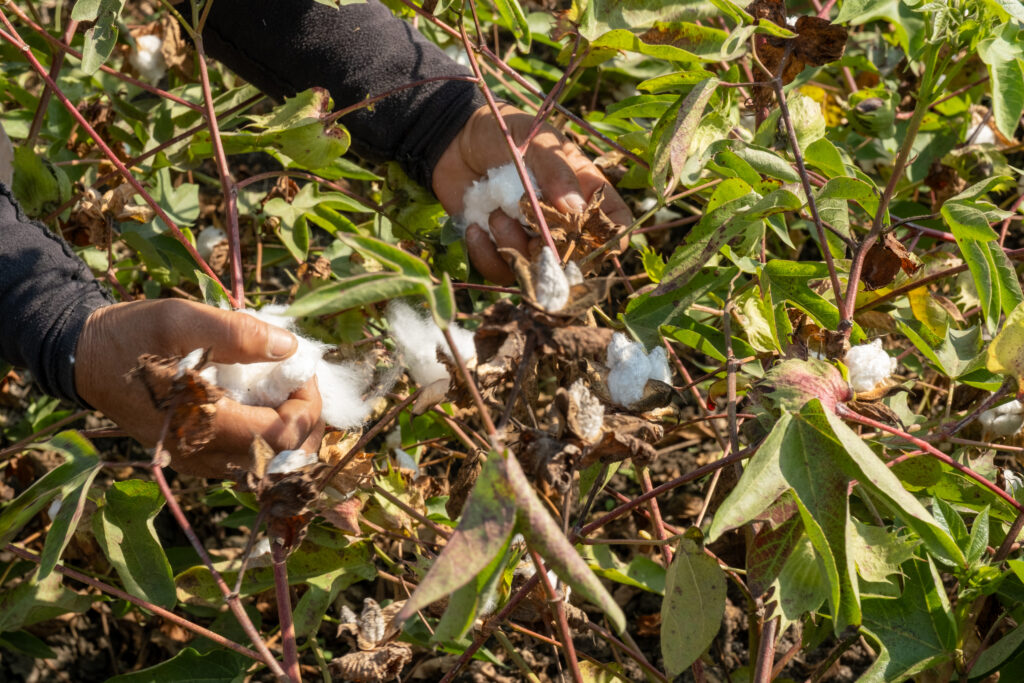

By Lisa Barratt, Senior Manager, Africa Programmes, Better Cotton


As much as 90% of African cotton is exported. It’s evidence of supreme demand from the global fashion industry, but also a stark reminder of the continent’s fledgling industrial landscape. This UN Africa Industrialization Day, the signs are there that things are about to change with bold plans to scale clothing production.
Despite their low environmental footprint, Africa’s smallholder cotton farmers are dedicated to advancing sustainable development. Fortunately, at a time when climate-related risks loom, these communities are poised to reap the rewards of an ambitious new partnership – one that could catapult Africa’s industrial evolution into the future.
Across Africa, cotton is grown by smallholders working just a couple of hectares. Rain-fed and hand-picked, their crops shape their livelihoods, which perhaps explains why cotton farmers, with support from initiatives like Better Cotton, are embracing more sustainable practices in increasing numbers.
At Better Cotton, we support farmers to boost their resilience in the face of climate threats. Across Africa, we partner with local organisations in countries such as Cote d’Ivoire, Mali, Mozambique, Egypt and Benin on a broad spectrum of improvements, from soil health and water management to the development of sustainable solutions such as biopesticides, which can tackle infestations without relying on costly – and sometimes highly hazardous – chemicals.
But the real prize for the region’s cotton growers lies in boosting its own textile industry. At present, 90% of Africa’s cotton is exported. This is a missed opportunity for a continent that desperately needs to build economic and employment prospects for its youth.
If Africa could develop more of an indigenous manufacturing sector, turning home-grown cotton into finished thread and clothing, it could transform prospects not only for its smallholder farmers, but its urban poor as well.
Government bodies in West and Central Africa are already collaborating to boost the cotton sector through an innovative partnership. The ‘C4+’ Group – comprising Benin, Burkina Faso, Chad, Cote d’Ivoire, and Mali – and are working as a consortium to strengthen the region’s cotton sector and attract more investment in clothing manufacturing.
This has now recently received a significant boost thanks to a groundbreaking partnership between the World Trade Organization (WTO) and FIFA, the international football federation. Backed by a band of organisations, including Better Cotton, UNIDO, the ILO and the ITC, this ‘Partenariat pour le coton’ (Partnership for Cotton) is actively exploring how cotton from the C4+ countries can play a greater part in the production of football merchandise in new manufacturing facilities based in West Africa.
There’s huge potential here: as WTO’s Director-General, Ngozi Okonjo-Iweala, points out, the value of exports of cotton thread and t-shirts from the region amounts to just $100,000 per year, compared to the $800 million worth in exports of unfinished cotton lint. If a substantial portion of that could be finished in the region, it would be transformative.
The potential of this partnership has been further supported by efforts from UNIDO, the WTO, ITC and Afreximbank, along with financial institutions, Africa Finance Corporation and the International Islamic Trade Finance Corporation, who have outlined their goal of raising up to $12 billion in investment to support the growth of a sustainable cotton-to-textile/apparel value chain.
This could finance improvements in energy access and job opportunities, particularly for women. A UNIDO study suggests that finishing just 25% of the region’s raw cotton could create up to 500,000 jobs.
It is a huge opportunity – both for the African economy, and for the future of a more sustainable cotton sector: one with smallholders at its heart.
Read more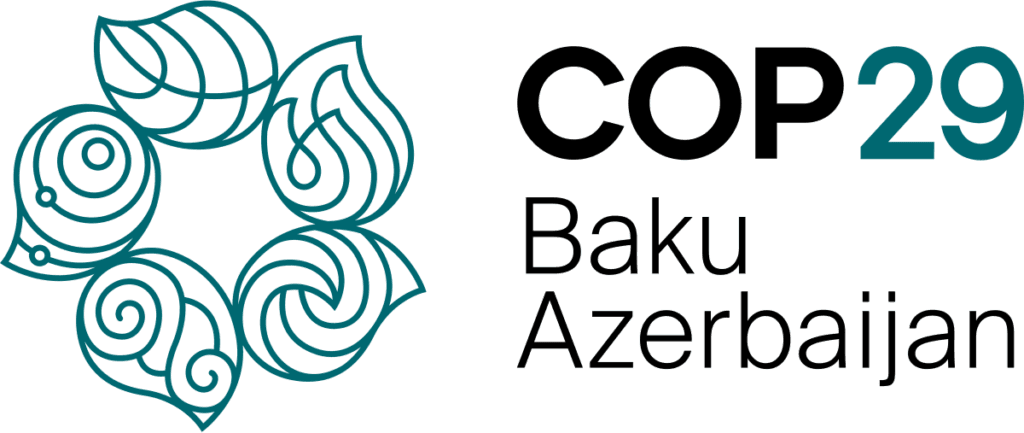

This year, Better Cotton is participating in COP29, the annual UN Climate Change Conference of the Parties. We are proud to be part of the first-ever COP Standards Pavilion, sharing a platform with leading sustainability standards organisations to showcase international standards as essential, systemic, scalable solutions for achieving large-scale impactful climate resilience.
In Baku, we will be convening a range of discussions on human-centred adaptation and mitigation strategies in cotton farming, engaging in debates about the role of natural fibres in the EU’s shift towards a climate-neutral and circular economy, and exploring how sustainable cotton farming in Azerbaijan can positively impact both local and global market.
Date: 14 November 2024
Time: 10:00 – 11:00
Location: Azerbaijan Pavilion C3
Description: This session will convene global stakeholders to explore sustainable cotton farming practices in Azerbaijan, discussing progress, challenges, and opportunities within the sector, focussing on strategies that promote climate resilience and rural development. The panel will focus on strategies that promote climate resilience and rural development through sustainable cotton production, emphasising the role of finance, policy, and trade in scaling these initiatives, while exploring how sustainable practices can positively impact both local and global markets. Finally, in response to an expression of interest in launching a Better Cotton Programme in Azerbaijan, we will also use this opportunity to set out the elements necessary for an enabling environment to be implemented credibly.
Speakers:
Date: 18 November 2024
Time: 11:15-12:15
Location: Standards Pavilion B15, Area E
Link: Please click here to access the livestream
Description: Following the common thread of ‘people first’, this discussion will dive into locally implemented innovative strategies like using biochar or agroforestry tested and adopted in smallholder contexts to improve soil health, remove carbon from the atmosphere and increase incomes of farming communities. A unique set of perspectives brought by voluntary sustainability standards, civil society and supply chain actors will demonstrate how, when the right investments are made, the scalability of multistakeholder collaboration can truly transform agricultural practices and combat climate change.
Speakers:






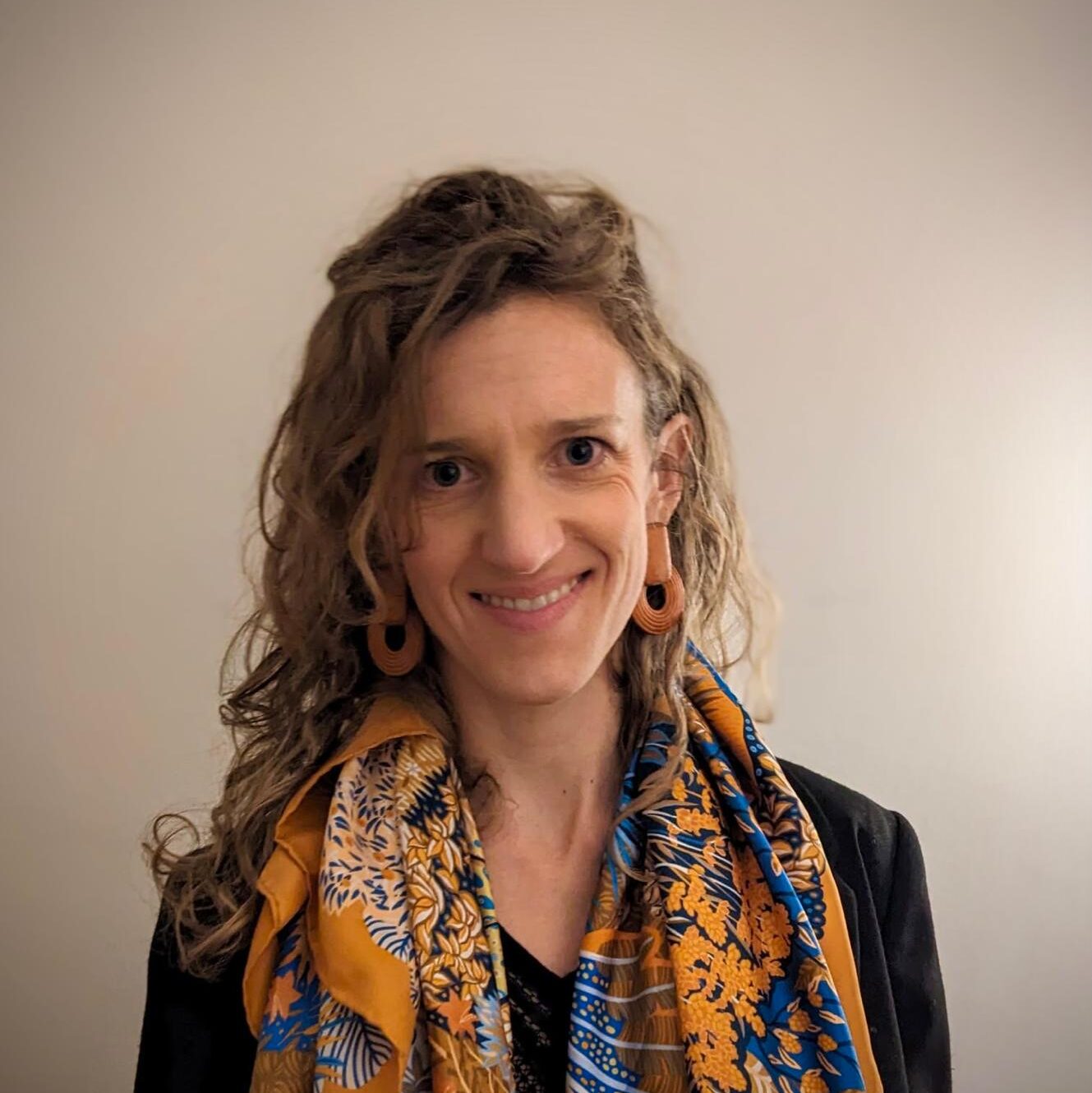

Date: 20 November 2024
Time: 11:15-11:45
Location: Standards Pavilion B15, Area E
Link: Please click here to access the livestream
Description: Do you ever wonder if the clothes that you buy are made of synthetic or natural fibres, and what difference that makes? In this 30 minute conversation, we will explore how the highly debated EU Product Environmental Footprint (PEF) methodology aims to standardise the way we measure and communicate the environmental impact of products. Perspectives brought by Brazilian and Australian cotton stakeholders will shed light on the true environmental and human impact PEF is likely to have and the role of Make the Label Count in advocating for accurate, transparent labelling to empower consumers to make informed, sustainable choices.
Speakers:




Better Cotton has signed a strategic roadmap with leading authorities in Uzbekistan’s agricultural and textile sectors.
Read more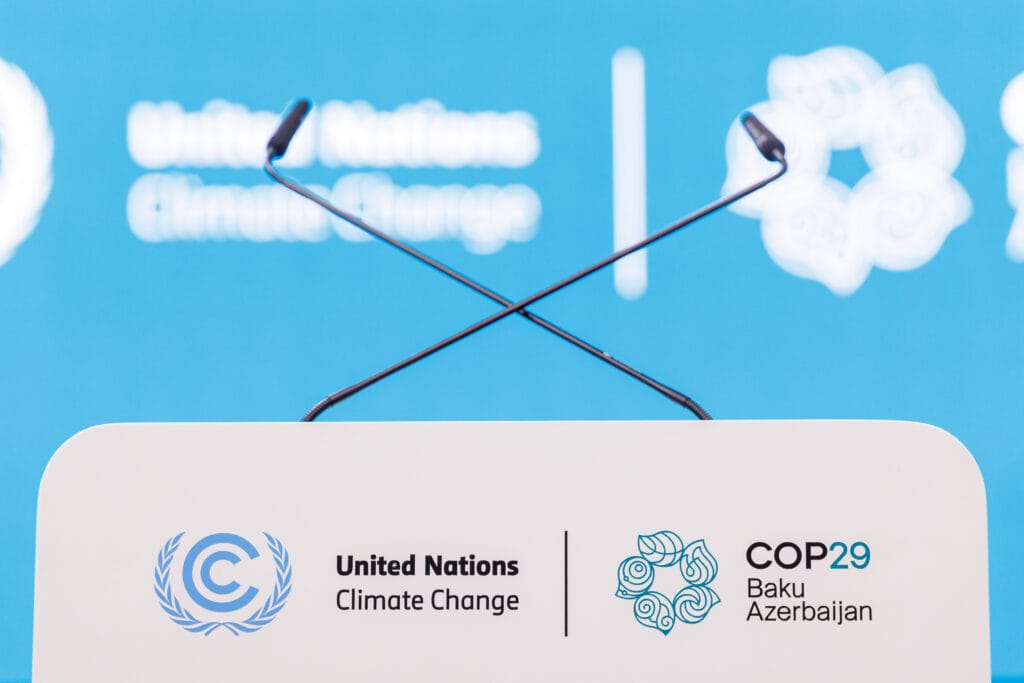

As COP29 kicks off today, Better Cotton is urging global leaders to place farming communities at the centre of climate action and to recognise the critical role sustainability standards play in driving measurable progress toward climate resilience.
With a strong focus on securing an ambitious new finance commitment from developed nations to support climate action in developing countries, Better Cotton is pushing for farmers’ voices to be placed at the heart of these discussions, ensuring that they not only withstand climate impacts but are empowered to lead in sustainable agriculture.
Supporting over two million farmers globally, Better Cotton’s existing initiatives show how sustainability standards can drive real-world change. The new Impact Fund, for example, accelerates field-level sustainability and climate resilience efforts in cotton-growing communities starting in India. Better Cotton is also engaging in the Unlock Programme, which breaks down barriers to decarbonising cotton and raw material production.
Farmers are on the frontline of climate change and their voices cannot be relegated to the sideline. Standards like Better Cotton have the power to unlock far-reaching impact and enable businesses to accelerate climate progress. We must not leave the farming communities to face the full force of climate change alone.
While smallholder farmers globally receive just 0.8% of total climate finance, those growing cotton – which represent more than 90% of the world’s cotton farmers – are expected to receive an even smaller share.
IFAD estimates that US$75 billion is required each year to enable smallholder farmers to successfully adapt to the effects of climate change.
Better Cotton’s call to action comes as it partners with the International Organisation for Standardisation (ISO) and other sustainability standards bodies to launch the first-ever Standards Pavilion at COP.
To truly empower these farmers to adapt and thrive amidst climate change, leaders at COP29 must prioritise meaningful financial commitments, pledge ambitiously and ensure smallholders have the support they need to drive sustainable agriculture forward.
Better Cotton has a delegation attending the COP29 Summit in Baku, including:
Notes to Editors:
Climate change and cotton production:
Better Cotton at COP29 events:
This year, we are proud to announce that Better Cotton will be part of the first-ever Standards Pavilion at COP – a space bringing together sustainability standards organisations from across the world to advance climate action.
Read moreBetter Cotton has signed a Memorandum of Understanding (MoU) with its programme partner in Tajikistan, Sarob, to strengthen the implementation of the national Better Cotton Programme.
Read more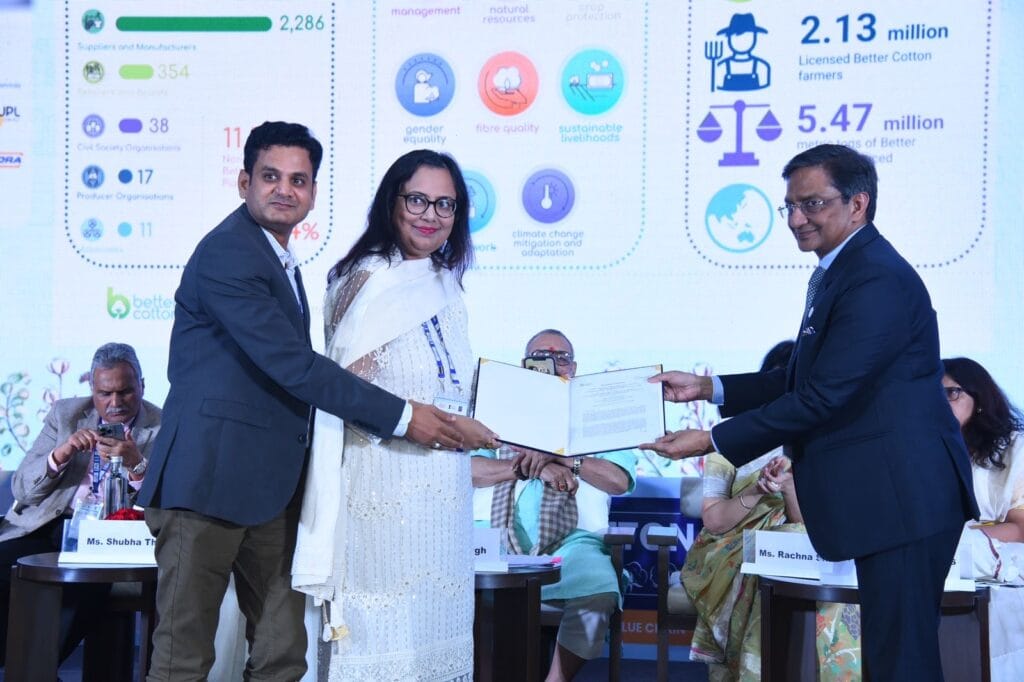

Better Cotton has signed a Memorandum of Understanding (MoU) with The Cotton Textiles Export Promotion Council (TEXPROCIL) of India to promote quality, home-grown cotton globally.
Last year, TEXPROCIL teamed up with the Government of India and its Ministry of Textile to launch ‘Kasturi Cotton’, the country’s first-ever branded cotton designed to reflect high-quality fibre.
This collaboration offers the best of both worlds in the cotton sector: with Better Cotton a standard for sustainability and Kasturi a recognised standard1 for fibre quality, this partnership aims to demonstrate that sustainability goes hand-in-hand with high-quality cotton.
Our collaboration with TEXPROCIL will help shine a spotlight on Indian cotton and its impressive credentials. It also creates the opportunity for companies to secure higher prices for the cotton they sell by aligning with both the Better Cotton and Kasturi Cotton standards.
This collaboration unites two critical initiatives: sustainability and higher quality standards. Together, they will elevate Indian cotton and shape the future of cotton production in India.
Better Cotton will help promote Kasturi Cotton by encouraging its network to align with the Kasturi Cotton Standard to demonstrate the high quality of the Better Cotton they sell.
As per the MoU’s terms, TEXPROCIL has committed to providing training to Better Cotton Member gins keen to align with the Kasturi Cotton programme. It will also highlight Better Cotton’s mission among its network of more than 2,000 companies across India’s textile manufacturing regions to drive engagement with the sustainability initiative.
Better Cotton can in turn look to engage more cotton gins across India, outline the benefits of sourcing more sustainable cotton and aim to boost uptake within the country’s supply chains.
The pair will collaboratively develop a series of workshops for cotton gins across the country both to educate around sustainability in cotton production and outline the benefits of alignment with their respective programmes.
Better Cotton is celebrating one year since the launch of Better Cotton Traceability, its revolutionary system designed to transform supply chain transparency.
Read moreEmbracing localised approaches to sustaining cotton farming in the US’ largest producing state.
Read moreBetter Cotton is part of a Cascale-led initiative to develop a groundbreaking methodology for aligning cotton Life Cycle Assessment (LCA) approaches.
Read more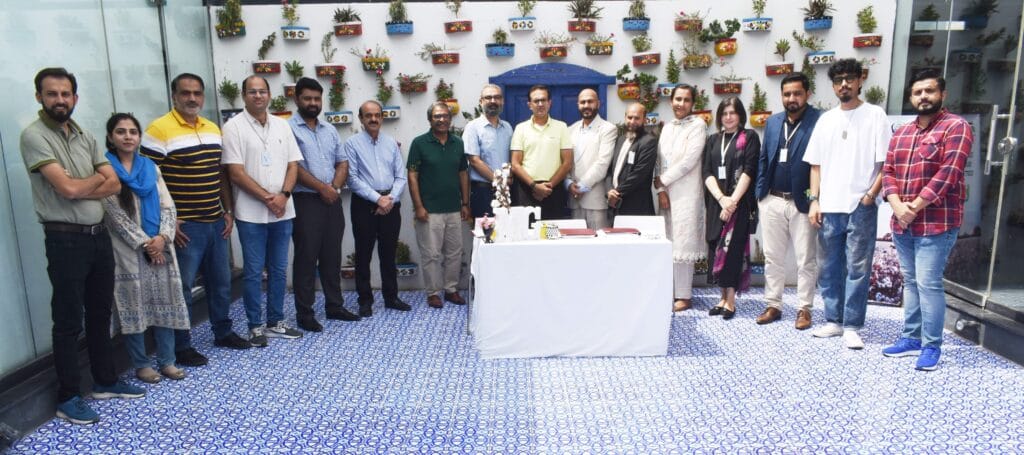

Better Cotton Pakistan has signed a Memorandum of Understanding (MoU) with textile manufacturing giant Mahmood Group and government research body, the Central Cotton Research Institute (CCRI), to collectively promote the production and uptake of Better Cotton across the country.
Over the next three years, the Mahmood Group will fund Better Cotton’s training of CCRI as it helps the institute become an official Better Cotton Programme Partner1, enhancing its ability to support sustainable cotton production on a larger scale.
Through this collaboration, it will support almost 8,000 cotton farmers across the Multan district of Pakistan, boosting resources and support available in the country after it faced major setbacks. In the 2022/23 cotton season, devastating floods wiped out more than 40% of the country’s cotton crop.
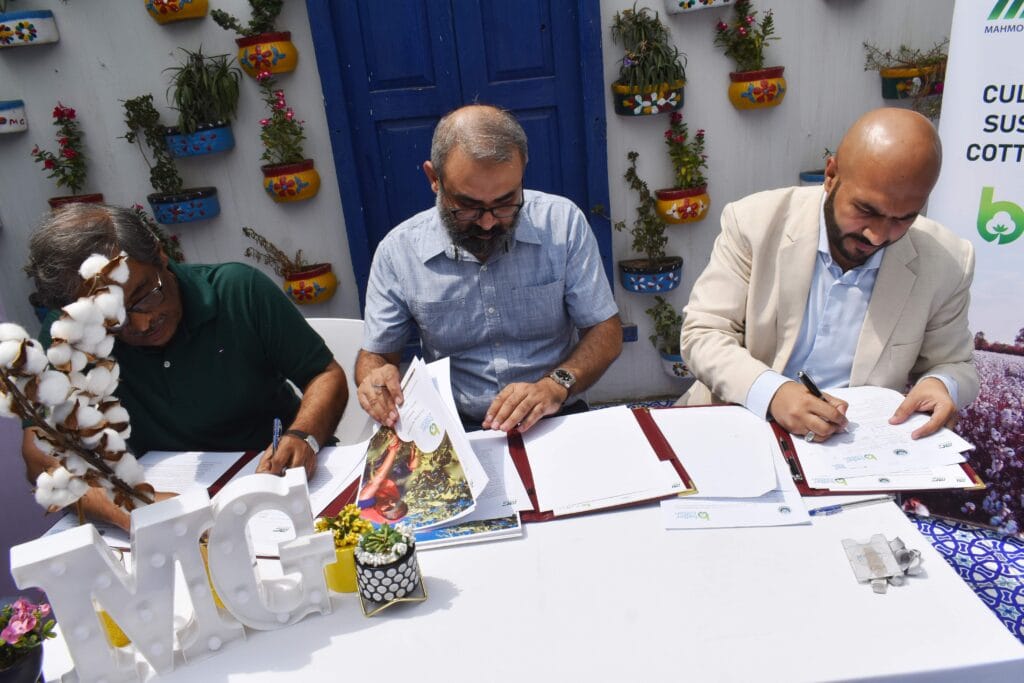

Pakistan’s cotton farming communities have shown remarkable resilience to bounce back from the floods of 2022. We are committed to a nationwide rebuild to ensure that Pakistan once again stands proud as one of the world’s leading cotton producers, and this partnership with Mahmood Group and the CCRI will be instrumental to achieving that.
Additionally, the partnership with the Mahmood Group and CCRI will help promote the production and uptake of more sustainable cotton through joint advocacy and communications efforts, specifically planned engagement with cotton farming communities and government bodies.
I am thrilled to share the partnership with Better Cotton in this sustainability journey. Mahmood Group is a leading textile manufacturer, shares commitment to sustainability and excellence. With decades of experience and expertise, our company has served as a trusted partner in the cotton industry.
Pakistan’s cotton sector is facing multiple challenges that include the climate change, poor market systems as well as low productivity with high input costs. The programme, through this MoU, puts great value in the cotton sector and we are determined to play a vibrant role for the improvement of cotton.
1. Programme Partners work with farming communities to ensure they are producing cotton that meets the Better Cotton Standard.
Read more